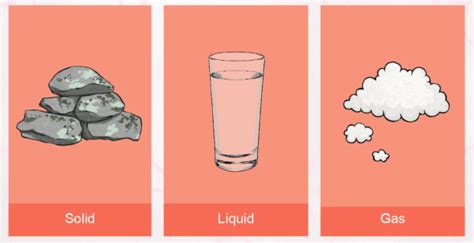What Is The Melting Point Of Ice
Arias News
Apr 05, 2025 · 4 min read

Table of Contents
What is the Melting Point of Ice? A Deep Dive into Water's Phase Transition
The seemingly simple question, "What is the melting point of ice?" opens a door to a fascinating exploration of the physical properties of water, a substance crucial for life on Earth. While the short answer is 0° Celsius (32° Fahrenheit), a deeper understanding requires delving into the intricacies of phase transitions, the influence of external factors, and the unique characteristics of water that set it apart from other substances.
Understanding Phase Transitions: From Solid to Liquid
The melting point of a substance represents the temperature at which it transitions from a solid state to a liquid state. This transition, known as melting or fusion, involves overcoming the intermolecular forces holding the molecules in a rigid, crystalline structure. For ice, these forces are primarily hydrogen bonds, relatively strong interactions between water molecules due to the polar nature of the water molecule.
To melt ice, enough thermal energy must be supplied to break these hydrogen bonds. This energy is absorbed by the ice, causing the molecules to gain kinetic energy, moving more vigorously and disrupting the ordered crystalline lattice. Once the hydrogen bonds are sufficiently weakened, the ice transitions to liquid water.
The Role of Pressure: More Than Just Temperature
While 0°C is the standard melting point of ice at standard atmospheric pressure (1 atm), this is not a fixed constant. Pressure significantly impacts the melting point. This is because an increase in pressure favors the denser phase. In the case of water, liquid water is denser than ice (a unique property!). Therefore, increasing the pressure lowers the melting point of ice.
This phenomenon is known as pressure-melting, and it's the reason why ice skates work. The pressure exerted by the blade on the ice lowers the melting point locally, creating a thin layer of water that acts as a lubricant, allowing for smooth gliding.
The Anomalous Behavior of Water: Why is it Different?
Water exhibits several unusual properties compared to other substances, and its melting point behavior is a prime example. Most substances become denser when they solidify, but ice is less dense than liquid water. This anomaly is due to the unique structure of ice's crystalline lattice.
The hydrogen bonds in ice force the water molecules into an open, hexagonal structure, creating relatively large spaces between the molecules. When ice melts, these open structures collapse, leading to a denser liquid phase. This lower density of ice compared to liquid water is why ice floats on water—a crucial factor for aquatic life survival during winter.
Isotopic Effects: Variations in Melting Point
The precise composition of water molecules also influences the melting point. Water consists primarily of H₂O, but variations in the isotopes of hydrogen (deuterium and tritium) and oxygen can slightly alter the melting point.
Heavy water, which contains deuterium instead of hydrogen, has a slightly higher melting point than ordinary water. This difference, while small, highlights the impact of molecular mass on intermolecular forces and the energy required for phase transitions.
Measuring the Melting Point of Ice: Experimental Considerations
Accurately measuring the melting point of ice requires careful experimental design and precise instrumentation. Several factors can affect the apparent melting point, including:
- Purity of the ice: Impurities in the ice can depress the melting point, leading to lower measured values.
- Rate of heating/cooling: Rapid changes in temperature can introduce errors due to thermal gradients within the sample.
- Pressure variations: Deviations from standard atmospheric pressure will alter the melting point, as discussed earlier.
Precise measurements often involve using calibrated thermometers, insulated containers, and controlled environmental conditions.
Beyond the Melting Point: Implications and Applications
Understanding the melting point of ice is crucial across numerous scientific disciplines and practical applications:
- Glaciology and Climatology: Studying the melting of glaciers and ice sheets helps scientists understand climate change and its impacts.
- Oceanography: The melting of sea ice influences ocean currents and salinity, affecting global weather patterns.
- Material Science: The unique properties of water and ice are utilized in diverse materials science applications, including cryopreservation and ice engineering.
- Food Science: The freezing and melting of water are essential aspects of food processing and preservation.
- Everyday Life: From drinking cold water to winter sports, our daily lives are intimately connected to the melting behavior of ice.
Conclusion: A Simple Question with Deep Significance
The seemingly simple question regarding the melting point of ice opens a window into a world of complex scientific principles and practical applications. The fact that the melting point is not a static value but is influenced by factors like pressure and isotopic composition underscores the intricate nature of phase transitions and the unique characteristics of water, a substance whose properties shape our world in profound ways. Understanding these nuances provides a deeper appreciation for the fundamental processes governing our environment and the materials we use daily. Further research continues to reveal even more subtle effects, expanding our knowledge of this seemingly simple substance and its remarkably complex behavior.
Latest Posts
Latest Posts
-
How Fast Is 23 Knots In Mph
Apr 06, 2025
-
What Are The Wheels On A Tank Called
Apr 06, 2025
-
What Percentage Of An Hour Is 5 Minutes
Apr 06, 2025
-
Which Is Bigger 1 4 Or 1 8
Apr 06, 2025
-
How Much Is 3 Ounces Of Meat In Cups
Apr 06, 2025
Related Post
Thank you for visiting our website which covers about What Is The Melting Point Of Ice . We hope the information provided has been useful to you. Feel free to contact us if you have any questions or need further assistance. See you next time and don't miss to bookmark.
